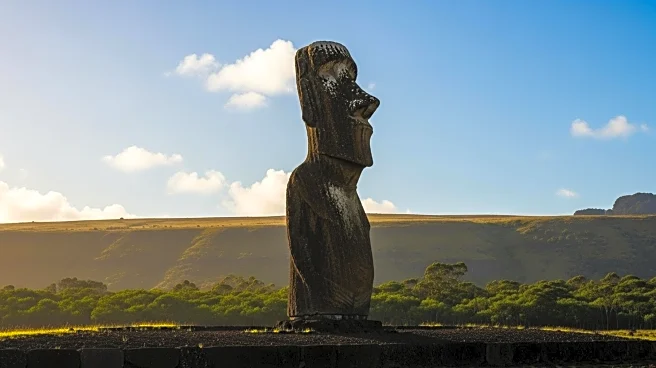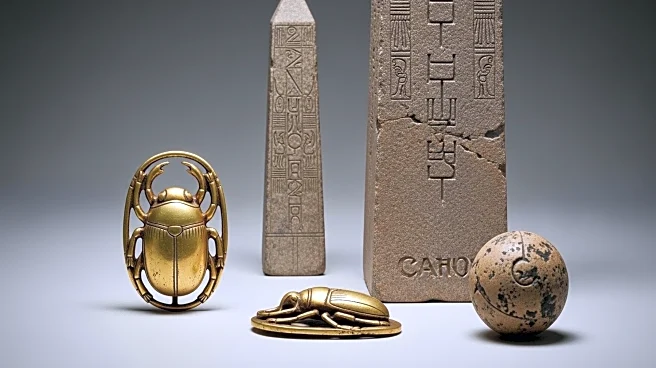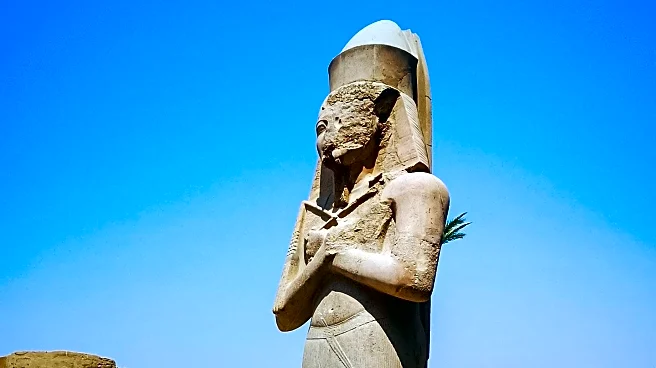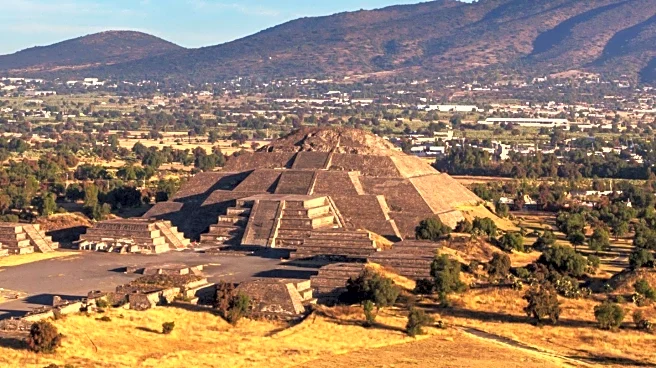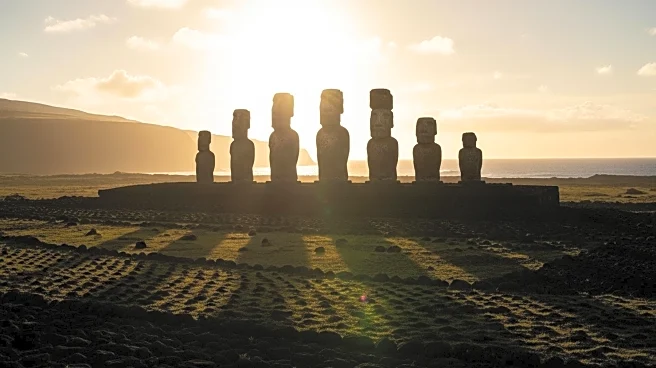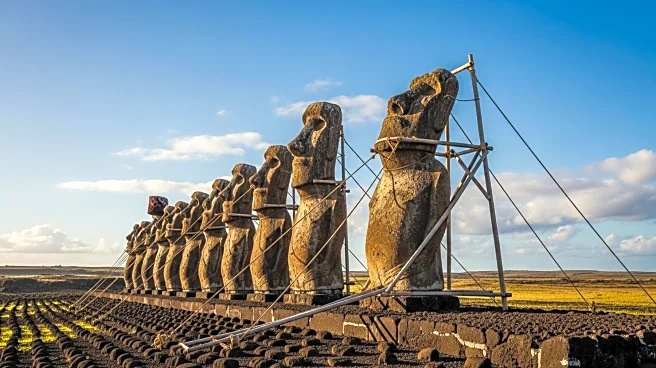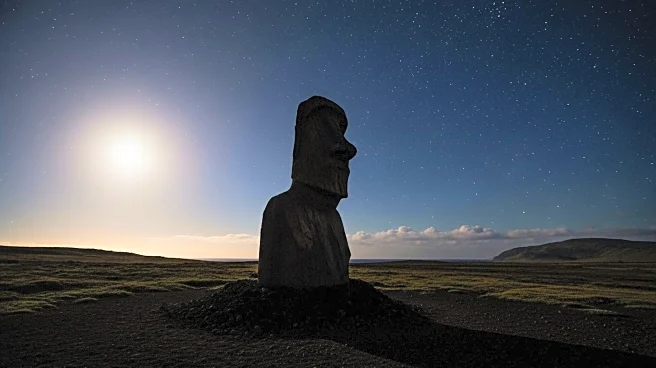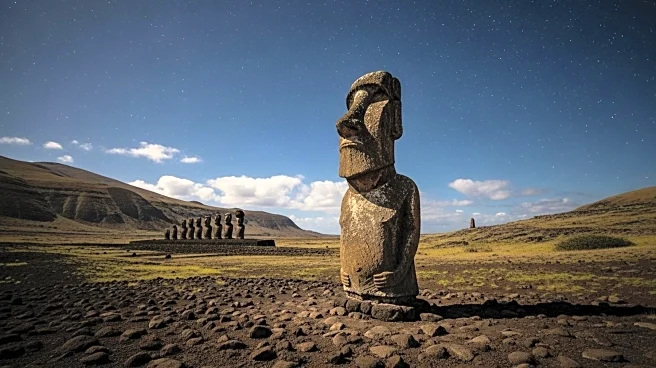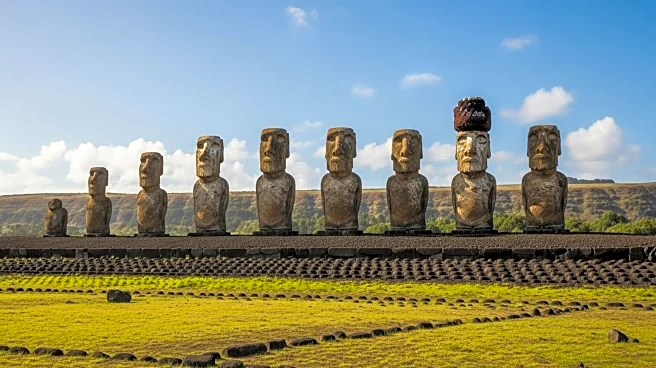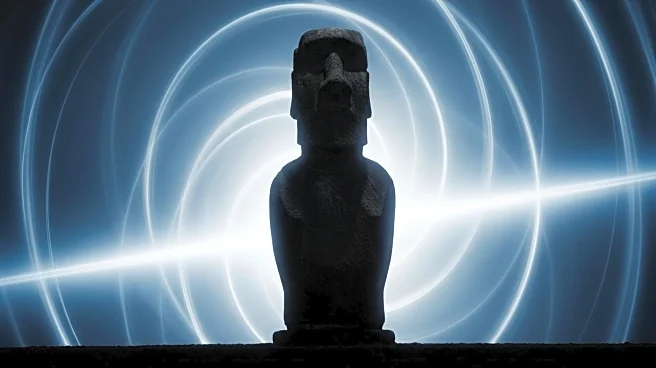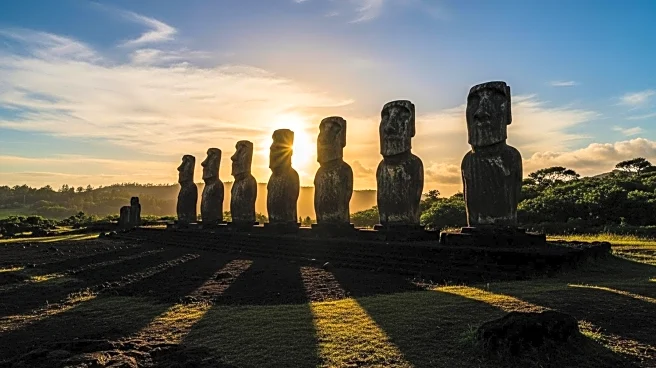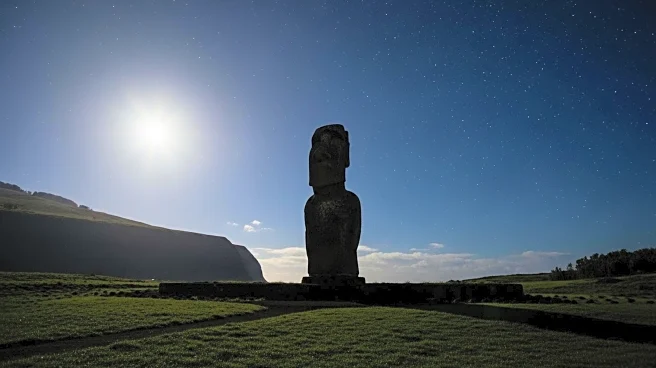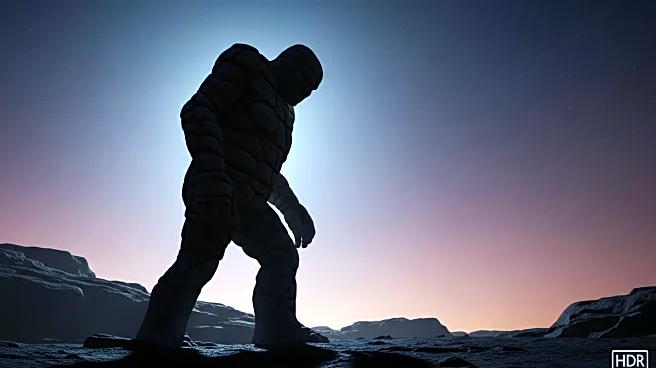What is the story about?
What's Happening?
A team of researchers led by Carl Lipo from Binghamton University and Terry Hunt from the University of Arizona has unveiled a groundbreaking theory regarding the transportation of the moai statues on Easter Island. The study suggests that these massive stone figures were moved using a 'walking' technique facilitated by ropes and a zigzag motion. This method allowed the statues to be transported upright along specially designed roads, overturning previous theories that they were dragged horizontally on wooden sleds. The researchers tested their hypothesis by creating high-resolution 3D models of the statues and constructing a 4.35-ton replica, which was successfully 'walked' 328 feet by 18 participants in 40 minutes. The study highlights the ingenuity of the Rapa Nui people, who used their resources efficiently to move these monumental figures.
Why It's Important?
The discovery of the 'walking' method for transporting the moai statues is significant as it provides a scientific explanation for a mystery that has puzzled researchers for centuries. It showcases the advanced engineering skills and resourcefulness of the Rapa Nui people, offering insights into their cultural practices and societal organization. This finding not only enriches our understanding of Easter Island's history but also demonstrates the importance of evidence-based archaeology in solving historical enigmas. The study emphasizes the potential for ancient techniques to inspire modern engineering solutions, highlighting the value of interdisciplinary research in uncovering historical truths.
What's Next?
The research team plans to continue exploring the implications of their findings, potentially applying the principles of the 'walking' technique to other archaeological mysteries. Further studies may focus on the cultural significance of the moai statues and their role in Rapa Nui society. The researchers aim to engage with the local community to integrate oral traditions and historical narratives into their scientific investigations, fostering a collaborative approach to understanding the island's heritage. Additionally, the study may inspire new methodologies in archaeology, encouraging researchers to combine experimental trials with advanced modeling techniques to uncover historical truths.
Beyond the Headlines
The revelation that the moai statues 'walked' into place offers deeper insights into the cultural and spiritual significance of these figures. The act of moving the statues upright may have symbolized the journey of ancestors watching over their descendants, reflecting the interconnectedness of engineering and spirituality in Rapa Nui culture. This discovery challenges previous assumptions about the island's history, prompting a reevaluation of the societal and technological capabilities of ancient civilizations. It underscores the importance of respecting and preserving indigenous knowledge systems, which can provide valuable perspectives on historical events and cultural practices.
AI Generated Content
Do you find this article useful?
